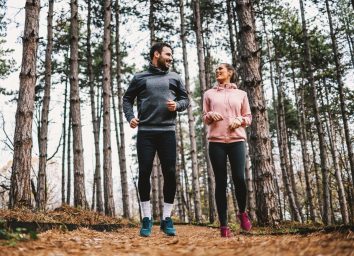The 3 Things You Should Always Do Before A Walk, Trainers Say
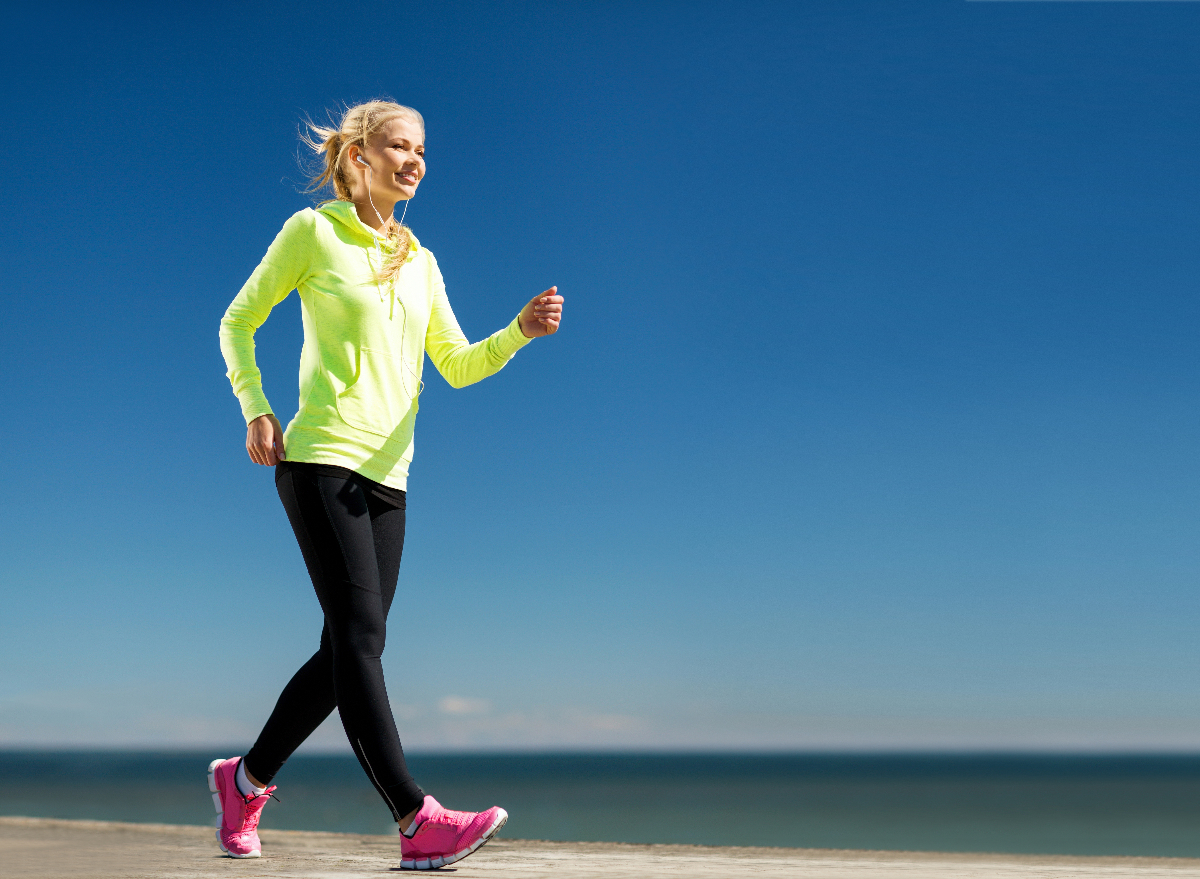
Walking is more than just a way to get yourself from point A to point B. It’s also a great form of exercise and comes with a host of health benefits. “There are so many reasons to make walking part of your fitness routine,” says personal trainer Samantha Ciaccia, CSCS. “Since it’s low intensity, walking is a joint-friendly way to burn fat and maintain a healthy weight.” There are psychological benefits, too, Ciaccia notes. “Outdoor walks allow you to slow down, take a breath of fresh air, and clear your headspace of stress and tension. The benefits are even greater if you bring a friend along for that additional social interaction.” So with the help of a few trainers, we’ve put together the three things you should always do before a walk, which we’ll get into below.
In order to ward off aches and injury so you can have fun and stay consistent in logging steps, it’s vital to prep your body for movement. Ahead, Ciaccia and two other trainers share how they tell their clients to prep for their walking workouts. Follow their tips to get the most from your miles, too. (Of course, before beginning any exercise program, make sure you’re cleared by your physician—especially if you have any health issues or injuries.)
Read on to learn the three things you should do before a walk, and next, check out The 6 Best Exercises for Strong and Toned Arms in 2022, Trainer Says.
Hydrate, hydrate, hydrate!
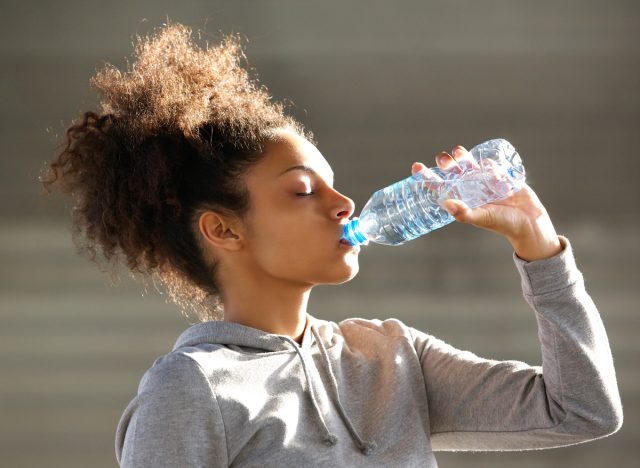
If you’re not already drinking water throughout the day, fill a big water bottle, and start sipping two or three hours before your walk. “This ensures you’re going into the workout hydrated, not hydrating,” Ciaccia says. “Ensuring you’re hydrated before a workout helps lubricate your joints, [manages] your body temperature, and helps transport all the nutrients and fuel your muscles need to exercise. If you’re dehydrated, you will feel more fatigued, and may even get dizzy or experience muscle cramps.”
Zoe Schwartz, ACE of the Brooklyn-based personal and group training company, Fitness by Zoe, also notes the importance of hydration but says you may want to stop drinking 30 or 40 minutes before you start working out—especially if there won’t be any bathrooms on your walking trail. “Calibrate your water and timing consumption based on your experience with your own body. Keep experimenting until you feel you have the right hydration pre-walk,” Schwartz says.
Related: Secret Exercise Tricks To Tone Sagging Arm Skin While Walking, Trainer Says
Give your hamstrings and glutes some TLC
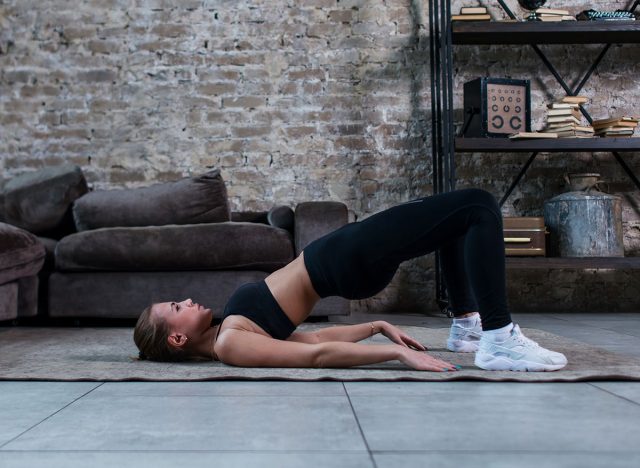
Before a walking workout, it’s important to “turn on” or “activate” your glutes and stretch your hamstrings, according to Kit Rich, NASM, a celebrity personal trainer. “When you activate your glutes before walking, they can better support your body and help decrease pressure on the hips, knees, and back,” she explains, noting that doing 15 to 20 reps of clamshells, fire hydrants, and bridges is ideal.
To loosen up the hamstrings, do a total of 20 straight leg kicks, or spend some time in a static seated toe touch. “Often our hamstrings are tight from sitting too much, and we don’t think to stretch them out. Then we go for a brisk walk, and they tighten more,” says Rich. “When the hamstrings are too tight, it can contribute to back, knee, and hip pain. Stretching them out before a workout helps to ward off the pain.”
Related: The Best Ways To Increase Your Visceral Fat Burn While Walking, Trainer Says
Warm up your feet
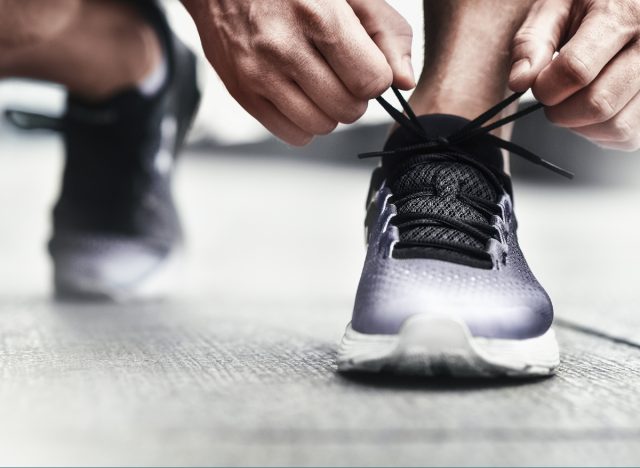
The glutes and hamstrings aren’t the only areas of the body that need warming up. In an ideal world, you’d spend some time priming your feet for a walk, too. “I know that warming up your feet sounds weird, but they’re the first things to touch the ground, and what happens to your feet affects the rest of your body as you walk,” says Ciaccia. To get the feet ready for action, Ciaccia recommends doing two or three sets of heel walks and tip-toe walks, covering 5 yards of ground for each round.
For more…
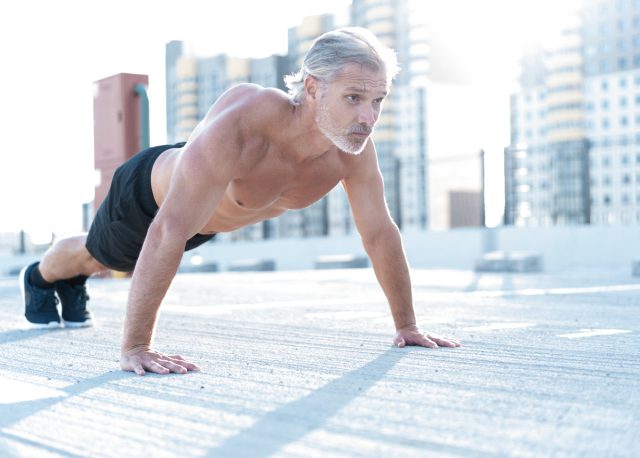
For more mind and body news, be sure to check out Speed Up Belly Fat Loss in Your 40s With These Floor Exercises, Trainer Says and 5 Easy Ways To Burn Fat Without “Exercising,” Trainer Says.
